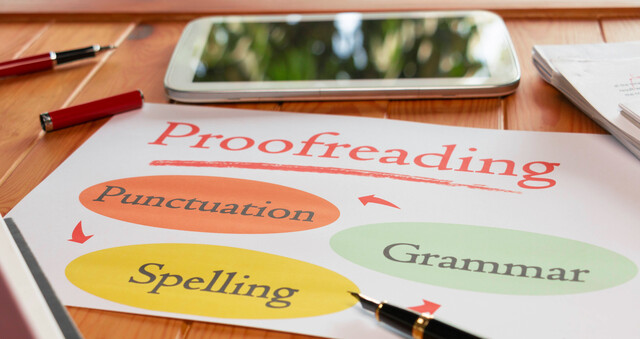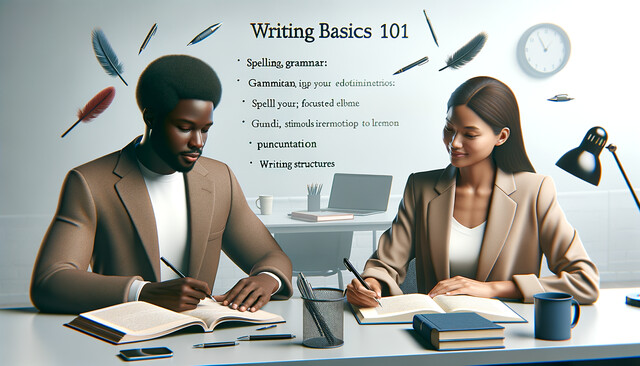Writing Basics 101: Spelling, Grammar, Punctuation, Writing Structures
Master the Essentials: Elevate Your Writing Skills!
Writing Basics 101: Spelling, Grammar, Punctuation, Writing Structures

Master the Essentials: Elevate Your Writing Skills!

Unlock your potential with "Writing Basics 101," a transformative journey into the power of effective communication. This isn't just a course--it's your gateway to writing with confidence and clarity. Rediscover the rules you once learned, now presented in an engaging, stress-free format designed to fit your life. Whether you're a student aiming for academic perfection, a professional refining work-related skills, or an aspiring writer crafting the next bestseller, this course will revolutionize your command of language. Our supportive community and expert guidance ensure you're never alone. Imagine embracing writing prowess, enhancing every email, report, or story you create. With "Writing Basics 101," elevate your skills, boost your career, and transform your voice into a powerful tool. Enroll today--your future self will thank you.
In This Course 
29 Hours average completion time
2.9 CEUs
26 Lessons
67 Exams & Assignments
1288 Discussions
25 Videos
288 Reference Files
34 Articles
Mobile Friendly
Last Updated December 2025
Description 
Most of us learned spelling and grammar in elementary school and brushed up on the rules occasionally in junior high or middle school. Once we entered high school, it was assumed we knew and remembered all of the essentials -- and slowly we discovered that although there were some rules we just had to look up, we simply stopped worrying about "the minor details." It's time to relearn those "minor details" that can help you write and read more effectively. But it's hard to fix something unless you know how it works.
This self-paced, stress-free course is designed for students wanting to improve their basic writing skills as well as for business writers, creative writers and office staff wanting to improve poor work-related writing (and avoid embarrassing their bosses and themselves).
Our innovative course is designed as a refresher course for those who need to brush up on their skills and as a reference for anyone who wants to be able to look up the rules for confusing grammatical questions quickly and easily. After you've reviewed the basic rules of grammar and spelling, you can move on to the lessons on writing style for tips on improving your sentence and paragraph structure, how to polish your writing and how to avoid common errors.
Although this course is completely online, it doesn't mean that you'll be left on your own. The instructor will be grading assignments and tests and is available through email to answer any questions and provide guidance. Why not join us, learn at your own pace and your own schedule and reap the benefits?
Skills You'll Develop 
- Improved grammar application skills
- Enhanced writing clarity and precision
- Increased confidence in writing tasks
- Strategic punctuation use for impact
- Analytical understanding of writing components
- Effective error correction strategies
- Mastery of sentence and paragraph structures
- Proficient spelling techniques
Discover More Skills Like These 
Related Courses 
-

Medical Terminology 101
-

How to Knit
-

OneNote for Windows
-

Basic Writing Skills Level 2
-

Pursuing Happiness: Successful Strategies
-

Travel Writing 101
-

Computer Literacy Level 2 - Internet Basics
-

River Rhythms: A Beginner's Guide into Canoeing
-

Vocabulary Level 3
-

Mastering Conversation Skills
-

Understanding and Managing Your Personal Credit
-

Community Development 101
-

How to Choose the Right Dog for You
-

Event Management Course Bundle
-

Spelling 101
-

Disaster Risk Reduction: Preparing for Emergencies
-

Punctuation and Grammar 101
-

Cooking Class Bundle: 5 Cooking Courses
-

Disaster Preparedness 101
-

Call Center Customer Service
